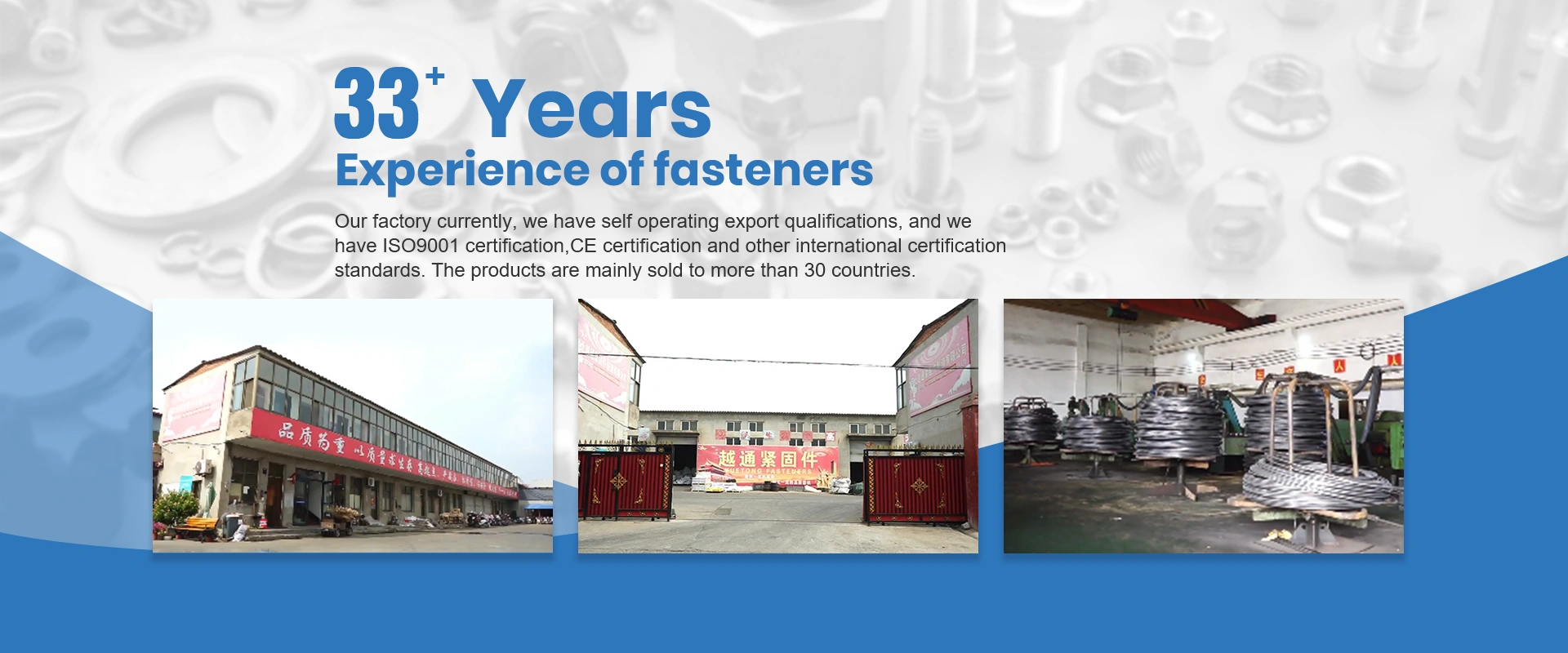Sep . 10, 2024 18:45 Back to list
m10 screw
Understanding the M10 Screw Specifications and Applications
The M10 screw is a standard metric fastener known for its versatility and reliability in various applications. Its designation, M10, indicates that it has a nominal diameter of 10 millimeters. The M stands for metric, distinguishing it from other screw types using inch measurements. This standardization in size and threading makes M10 screws essential in engineering and construction projects worldwide.
Specifications
M10 screws typically come in different lengths, ranging from 10 mm to over 200 mm, allowing for flexibility in choosing the right screw for specific needs. The thread pitch, which is the distance from one thread to the next, is commonly 1.5 mm for standard M10 screws. However, there are variations, such as the fine pitch (1.25 mm) for applications requiring more precise fastening, where the threads are closer together.
The materials used for M10 screws can vary widely, including steel, stainless steel, brass, and plastic. Steel screws are prevalent due to their strength and durability, often treated with coatings like zinc to resist corrosion. Stainless steel M10 screws are favored in environments exposed to moisture, as they provide excellent corrosion resistance.
Applications
M10 screws are utilized in numerous industries and applications. In the automotive sector, they are commonly used to assemble parts within engines and chassis due to their strength and reliability. In the construction industry, M10 screws are prevalent in fastening structural components, ensuring stability and safety in buildings and bridges.
m10 screw

Furthermore, the M10 screw is often used in furniture assembly, especially in ready-to-assemble furniture systems where ease of use and strength are vital. Their compatibility with various tools, such as wrenches and power drills, facilitates swift assembly processes.
Installation and Maintenance
When installing M10 screws, it is essential to consider the appropriate torque specifications to avoid over-tightening, which can lead to stripping the threads or damaging the materials being fastened. It is also crucial to select the right type of M10 screw based on the materials being joined, as different applications may require different head styles (e.g., hex, Phillips, or slotted) to ensure secure fastening.
Regular maintenance of structures and machinery using M10 screws is vital to ensure longevity and safety. Inspecting screws for signs of wear, corrosion, or loosening can prevent potential failures, especially in critical applications like construction and automotive assembly.
Conclusion
In summary, the M10 screw is a fundamental component in numerous applications, known for its strength, versatility, and standardization. When used correctly, these screws provide a reliable fastening solution across various industries, making them an indispensable part of modern engineering and manufacturing practices. Whether in everyday household projects or large-scale industrial applications, understanding the nuances of M10 screws can greatly enhance the quality and safety of any assembly.


